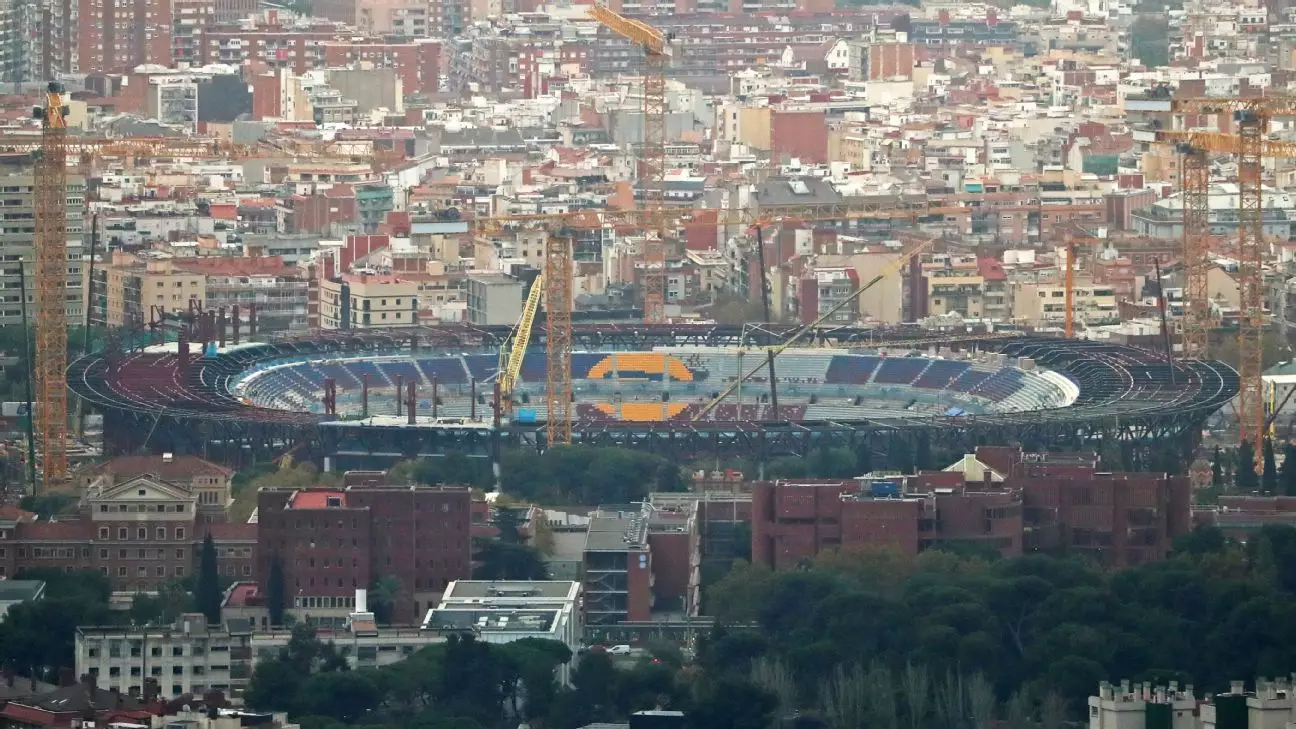Barcelona’s anticipated return to their iconic Camp Nou has hit unexpected roadblocks, prompting internal discussions about the possibility of further delays. Despite president Joan Laporta’s assertions that the club aims to resume play in March, sources indicate that this timeline may be overly optimistic. Initially, the Blaugrana had hoped to mark their 125th anniversary by returning to their historic stadium in November. However, as that date has now come and gone without progress, the complexities of the redevelopment project have become apparent.
The renovation of Camp Nou has proven to be more challenging than anticipated, particularly regarding the second tier of the stadium. The need for additional work in this area has stalled progress substantially. Furthermore, the installation of a new playing surface—a critical component for facilitating elite-level competition—requires substantial time, estimated at up to three months. With construction equipment still dominating the field, it is clear that the groundwork for a competitive pitch has not yet begun, which adds another layer of uncertainty to their intended timeline.
Laporta’s ambition to align the return with the knockout phase of the Champions League is partly influenced by UEFA regulations, which prohibit changes to a club’s home venue after matches in this phase commence. The switch of venues is strictly allowed only between the league phase and the knockout rounds. This restriction means that the urgency to complete the works in time for a March return aligns closely with UEFA’s stipulations, pressuring the club’s management as they navigate the redevelopment’s complexities.
In light of the challenges, Barcelona is considering a phased re-entry to Camp Nou. The initial phase will see a capped attendance of approximately 60,000, allowing the club to gradually resume operations while construction is still underway. This compromise indicates Barcelona’s commitment to returning to their spiritual home while acknowledging the realities of the ongoing renovation work.
Looking beyond the immediate hurdles, Barcelona envisions a fully transformed Camp Nou by the summer of 2026, anticipating an increased capacity of around 105,000—positioning it to be the largest stadium in Europe. This overhaul reflects a long-term strategic vision aimed at enhancing the fan experience and bolstering the club’s financial prospects. Currently, the club has been playing its matches at the Olympic Stadium, where they have extended their lease until March, illustrating a practical approach as they navigate the uncertainties of their homecoming.
While the path back to Camp Nou is fraught with complications, Barcelona’s leadership remains determined to overcome these challenges, demonstrating a blend of ambition and pragmatism essential for any successful sports organization. The return to their beloved stadium not only signifies a physical relocation but also a reaffirmation of the club’s rich heritage and future aspirations.
